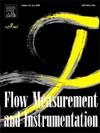Review and prospect of high-precision Coriolis mass flowmeters for hydrogen flow measurement
IF 2.3
3区 工程技术
Q2 ENGINEERING, MECHANICAL
引用次数: 0
Abstract
Mass flow rate determination is critical for the production, transportation, trade, and utilization of liquid hydrogen (LH2). The extreme operational conditions associated with LH2 and hydrogen gas (GH2) pose significant challenges to achieving accurate measurements. Among the available instruments, the Coriolis mass flowmeter (CMF) shows the most potential for accurately measuring hydrogen flow rate. This paper reviews the recent technical advancements about the impact of extreme properties of LH2 and GH2, along with operating parameters, on CMF performance. The primary focus lies in understanding the mechanisms and compensation strategies for factors such as density, temperature, pressure, vibration, and two-phase flow. Given the variability of LH2 and GH2 application scenarios, special attention is paid to discussing technologies for correcting zero shifts during measurements. Ultimately, strategies are proposed to mitigate the adverse effects of LH2 and GH2 on high-precision measurements. This review offers an outlook for further research on CMF for hydrogen.
求助全文
约1分钟内获得全文
求助全文
来源期刊

Flow Measurement and Instrumentation
工程技术-工程:机械
CiteScore
4.30
自引率
13.60%
发文量
123
审稿时长
6 months
期刊介绍:
Flow Measurement and Instrumentation is dedicated to disseminating the latest research results on all aspects of flow measurement, in both closed conduits and open channels. The design of flow measurement systems involves a wide variety of multidisciplinary activities including modelling the flow sensor, the fluid flow and the sensor/fluid interactions through the use of computation techniques; the development of advanced transducer systems and their associated signal processing and the laboratory and field assessment of the overall system under ideal and disturbed conditions.
FMI is the essential forum for critical information exchange, and contributions are particularly encouraged in the following areas of interest:
Modelling: the application of mathematical and computational modelling to the interaction of fluid dynamics with flowmeters, including flowmeter behaviour, improved flowmeter design and installation problems. Application of CAD/CAE techniques to flowmeter modelling are eligible.
Design and development: the detailed design of the flowmeter head and/or signal processing aspects of novel flowmeters. Emphasis is given to papers identifying new sensor configurations, multisensor flow measurement systems, non-intrusive flow metering techniques and the application of microelectronic techniques in smart or intelligent systems.
Calibration techniques: including descriptions of new or existing calibration facilities and techniques, calibration data from different flowmeter types, and calibration intercomparison data from different laboratories.
Installation effect data: dealing with the effects of non-ideal flow conditions on flowmeters. Papers combining a theoretical understanding of flowmeter behaviour with experimental work are particularly welcome.
 求助内容:
求助内容: 应助结果提醒方式:
应助结果提醒方式:


